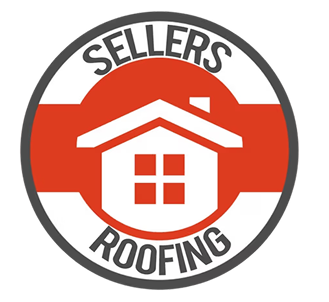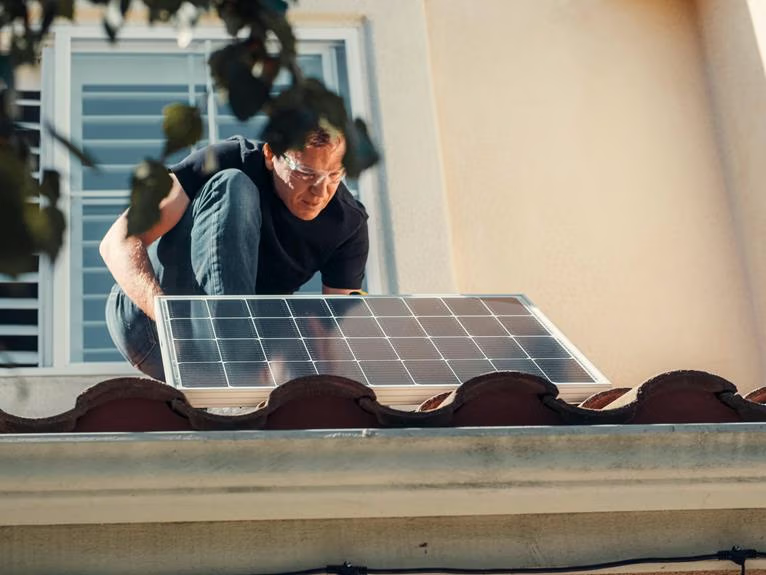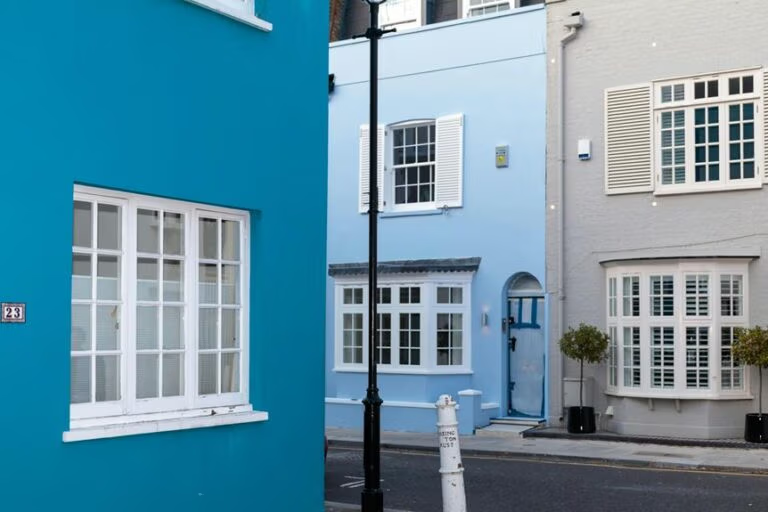When evaluating the best quality roofing shingles, durability, longevity, and functional attributes tailored to specific climates and architectural needs are paramount. Asphalt shingles are widely acknowledged for their cost-effectiveness and versatility, suitable for a variety of weather conditions, with advancements in fiberglass reinforcement enhancing their resilience. Metal shingles, although pricier initially, offer exceptional resistance to severe weather and can endure between 40 to 70 years. Slate shingles boast an impressive lifespan exceeding 100 years, blending sturdy weather resistance with a timeless aesthetic. Selecting the appropriate type enhances energy efficiency and overall property value. Further investigation will unveil detailed insights into how these choices cater to diverse architectural demands.
Key Takeaways and Insights
- Slate shingles are highly durable, lasting over 100 years and naturally resistant to the elements.
- Metal shingles offer a long lifespan of 40 to 70 years and are excellent in adverse weather conditions.
- Composite shingles, made from recycled materials, provide sustainability along with good durability and weather resistance.
- Wood shingles, while requiring more maintenance, offer a traditional aesthetic and good insulation properties.
- Asphalt shingles are cost-effective, versatile, and have improved durability with fiberglass reinforcement.
Types of Roofing Shingles
Exploring the different types of roofing shingles reveals a variety of materials and designs, each tailored for specific weather conditions and aesthetic preferences. From classic wood shingles to modern synthetic options, the choice in materials greatly influences both the energy efficiency and the environmental impact of a building.
Wood shingles, for example, offer a traditional appearance and excellent insulation properties but require a detailed installation process to guarantee durability and effective weather resistance. Conversely, metal shingles, known for their longevity and fire resistance, reflect solar radiant heat, which helps in reducing cooling costs and enhancing energy efficiency.
The installation process of each shingle type varies significantly. Slate roofing, while offering a distinctive aesthetic and extreme durability, demands a highly skilled installation team due to its heavy weight and the complexity involved in achieving a precise fit.
Moreover, the environmental impact and color options available across shingle types allow for customization without compromising on ecological awareness. Composite shingles made from recycled materials not only reduce landfill waste but also come in a variety of color options, enabling homeowners to achieve desired aesthetics while supporting environmental sustainability. Each material's unique properties and installation specifics play a vital role in its suitability for different climates and design visions.
Asphalt Shingles: Pros and Cons
Turning our focus to asphalt shingles, let's examine the advantages and disadvantages of this popular roofing material. Asphalt shingles are renowned for their cost-effectiveness and versatility, appealing broadly across various architectural styles. They are available in a plethora of colors and textures, allowing for aesthetic flexibility that can complement any home design.
From a technical standpoint, the durability of asphalt shingles is commendable, given their price point. They typically offer a lifespan of 15 to 30 years, depending on environmental conditions and the quality of installation. This durability is enhanced by modern manufacturing techniques that incorporate fiberglass reinforcement and weather-resistant asphalt coatings.
However, the installation process of asphalt shingles holds significant weight in their overall performance and longevity. Proper installation is vital; errors can lead to moisture infiltration, which diminishes the roof's integrity and can cause premature failure. Additionally, while asphalt shingles are durable, they are not as long-lasting as some more expensive materials, and they can be susceptible to wind uplift if not correctly secured.
Metal Shingles: Durability and Cost
Turning our focus to metal shingles, their durability and cost effectiveness are crucial for long-term roofing solutions. A thorough cost analysis reveals that, while initial expenses may be higher, the extended lifespan of metal shingles often offsets this initial investment over time. Additionally, their superior weather resistance performance guarantees reliability in various climatic conditions, making them an appealing option for many builders and homeowners.
Lifespan of Metal Shingles
Metal shingles, known for their sturdy durability, typically offer a lifespan of 40 to 70 years, greatly influenced by the quality of installation and maintenance practices. When considering longevity comparison among roofing materials, metal shingles stand out due to their superior resistance to adverse weather conditions, including heavy storms, hail, and extreme temperatures. This resilience contributes significantly to their long service life, positioning them favorably against other materials like asphalt or wood shingles.
The installation process of metal shingles is paramount in maximizing their potential lifespan. Proper installation requires technical know-how and precision to ensure that each shingle is securely fastened and that the roof structure is adequately prepared to support the metal shingles. This includes making sure that underlayment and flashings are correctly installed to prevent any potential water penetration, which can degrade the shingles over time. Moreover, ongoing maintenance, such as regular inspections and prompt repairs, plays a critical role in extending the life of a metal shingle roof.
For homeowners seeking a durable roofing solution that embodies both freedom from frequent replacements and the guarantee of longevity, metal shingles offer an exceptional choice that combines practicality with aesthetic appeal.
Cost Analysis Overview
Evaluating the cost-effectiveness of metal shingles requires a detailed analysis of upfront expenses versus long-term savings and durability. Initially, metal shingles present a higher cost compared to traditional asphalt options. This expense, however, must be weighed against their superior material longevity and minimal maintenance needs.
A robust cost comparison illustrates that while the upfront investment in metal shingles can be substantial, the amortized cost over time is competitive. Metal shingles are known for their impressive lifespan, often exceeding 50 years with minimal degradation. This contrasts sharply with asphalt shingles, which may require replacement every 15 to 20 years. The long-term financial analysis shows that metal shingles, despite the higher initial outlay, can result in significant cost savings over decades.
The durability of metal shingles also contributes to their cost-effectiveness. Their ability to withstand severe environmental conditions without substantial maintenance further enhances their economic value. For homeowners prioritizing a balance between upfront expenditure and future savings, metal shingles represent a prudent investment. This analysis underscores the importance of considering both immediate costs and long-term financial benefits in the decision-making process for roofing materials.
Weather Resistance Performance
Building on the economic analysis, the weather resistance of metal shingles further solidifies their position as a durable and cost-effective roofing solution. The installation process of metal shingles is streamlined and less labor-intensive compared to traditional materials, which not only reduces initial costs but also diminishes the likelihood of future expenditures related to repair and maintenance. This efficiency inherently enhances their longevity, offering homeowners a sense of freedom from frequent roofing concerns.
Metal shingles excel in various climates, demonstrating high resistance to extreme weather conditions, from heavy snowfall to scorching heat waves. Their superior climate suitability is complemented by robust warranty coverage, ensuring long-term protection and peace of mind for the property owner.
| Feature | Benefit | Emotional Impact |
|---|---|---|
| Longevity | Reduced replacement need | Peace of mind |
| Climate Suitability | Performance in all weathers | Confidence in home security |
| Warranty Coverage | Financial protection | Sense of security |
Through technical superiority and thoughtful warranty options, metal shingles provide a reliable and empowering roofing choice, aligning with the desires of those who seek both stability and freedom in their living spaces.
Wood Shingles: Aesthetic and Maintenance
Wood shingles, while offering a distinctive aesthetic appeal, present unique challenges and considerations in terms of durability and maintenance. The natural materials used in wood shingles can vary widely in their longevity and resistance to environmental factors, requiring regular upkeep to prevent degradation. Understanding the specific maintenance needs and the factors influencing the durability of different wood types is essential for peak performance and appearance retention.
Wood Shingle Durability
Although visually appealing, wood shingles require regular maintenance to retain their durability and aesthetic quality over time. The initial phase of wood shingle installation is critical to guarantee weather resistance. Properly installed wood shingles with appropriate underlayment and correct spacing allow the wood to breathe, reducing moisture retention and enhancing longevity.
Wood shingle maintenance is equally essential for extending their lifespan. Regular inspections can identify potential issues early, such as cracking or curling, which are indicators of environmental wear and tear. Treatments with preservatives and fire retardants are recommended to maintain structural integrity and to meet safety standards.
Here is a detailed table summarizing key aspects related to the durability of wood shingles:
| Aspect | Details |
|---|---|
| Installation | Proper spacing, underlayment, breathable setup |
| Weather Resistance | Resilient with preservatives, susceptible to moisture damage |
| Maintenance | Regular inspections, treatment applications |
| Lifespan | 20-30 years with diligent maintenance |
This table illustrates the importance of expert installation and consistent maintenance in maximizing the effective service life of wood shingles. By adopting these practices, homeowners can enjoy the natural beauty of wood shingles while guaranteeing their roof remains robust and functional over the years.
Aesthetic Appeal
In addition to their functional benefits, wood shingles offer a distinct aesthetic appeal, characterized by their natural texture and color variation. This unique appearance enhances the curb appeal of homes, making each structure stand out with a classic, yet distinct look. The richness of wood shingles not only complements various architectural styles but also offers a wide range of color options suitable for diverse personal tastes and design requirements.
To further clarify, here are key aspects highlighting the aesthetic benefits of wood shingles:
- Texture Variations: Each wood shingle boasts unique grain patterns and textures, contributing to a dynamic visual effect. This natural variation guarantees no two roofs are exactly alike, providing a sense of exclusivity and individuality.
- Color Options: Wood shingles naturally age and weather, evolving through various hues that blend harmoniously with the environment. Additionally, they can be treated with stains and finishes to achieve specific color preferences, allowing for a customizable appearance that resonates with homeowners seeking freedom in design.
- Installation Process: The method of installing wood shingles allows for varied stylistic choices, such as staggered or aligned arrangements, influencing both the overall aesthetic and the detailed craftsmanship of the roof. This flexibility in the installation process is crucial in shaping the architectural character of the building.
Maintenance Requirements
Maintaining the aesthetic integrity and longevity of wood shingles requires regular inspection and upkeep to prevent deterioration and damage from environmental factors. Owners should adhere to a rigorous schedule of maintenance activities, tailored to the specific demands of their geographic location and climatic conditions.
Inspection frequency is paramount; experts recommend a bi-annual review to identify potential issues such as cracking, curling, or rot. The onset of such damage should prompt immediate action to mitigate further degradation. Effective cleaning tips include using specialized wood cleaners to remove algae, moss, and debris, thereby preserving the shingles' natural beauty and efficacy. Additionally, it is prudent to check for and execute repairs needed to seal splits or replace individual shingles compromised by weather or wear.
Furthermore, understanding the warranty coverage provided by shingle manufacturers can offer peace of mind and financial protection. Most warranties cover defects and certain types of environmental damage, provided that the homeowner has adhered to the prescribed maintenance regimen.
Slate Shingles: Longevity and Value
Slate shingles are renowned for their exceptional lifespan, often exceeding 100 years, and their ability to enhance property value through aesthetic appeal and durability. Their longevity benefits and value comparison with other roofing materials make them an excellent choice for homeowners seeking a blend of tradition and performance.
When considering slate for roofing, it's important to focus on three key aspects:
- Durability and Resistance: Slate is naturally resistant to the elements, including extreme temperatures, sunlight, and chemical reactions, which makes it a formidable barrier against environmental wear and tear. This resilience translates into fewer replacements and repairs over time.
- Aesthetic Value: Slate offers a distinctive and elegant appearance that can greatly boost the curb appeal of any property. Its natural variation in color and texture makes each installation unique, providing an air of exclusivity and luxury that is highly prized in real estate markets.
- Cost-Effectiveness Over Time: The initial investment in slate roofing might be higher than other materials, but its enduring nature means that the cost per year of use can be remarkably low. This is a critical consideration in value comparison, particularly for those who value long-term property investment.
Choosing the Right Shingles
Selecting the appropriate roofing shingles requires careful consideration of material properties, climate compatibility, and architectural style. The choice hinges not only on aesthetic preferences, such as color options, but also on technical aspects like energy efficiency, which can greatly impact home heating and cooling costs. Advanced materials technology offers a variety of shingles that cater to different environmental conditions, enhancing durability and extending the life cycle of the roof.
When exploring warranty coverage, it's essential to understand the terms detailed by manufacturers, which can vary widely. A detailed warranty that covers both materials and the installation process can provide peace of mind, but the specifics of coverage can impact the long-term value of your roofing investment. Hence, detailed scrutiny of warranty documents is advisable to guarantee that coverage aligns with the expected lifespan and performance of the shingle type chosen.
Moreover, the installation process itself plays a vital role in the effectiveness of roofing shingles. Proper installation ensures maximum functionality and adheres to safety standards, thereby preserving the integrity of the roof's structure. Opting for certified professionals who specialize in the chosen shingle type can prevent future complications, ensuring that the roofing system performs ideally for years to come.
Frequently Asked Questions
How Do Weather Conditions Affect Shingle Lifespan?
Weather conditions greatly influence shingle lifespan. Climate impact and maintenance requirements affect durability. Proper installation considerations are essential for optimizing performance in various environmental conditions. Regular maintenance guarantees longevity and reliability of roofing materials.
Can Solar Panels Be Installed on All Types of Shingles?
Solar panel compatibility varies by shingle material. While most can support installation, thorough material comparison is essential to guarantee structural integrity and maximize efficiency. Consult a specialist for tailored advice on your roofing type.
Are There Eco-Friendly Shingle Disposal Methods?
Eco-friendly shingle disposal methods, such as recycling options, greatly reduce landfill impact. By repurposing materials, we preserve environmental freedom, ensuring sustainable building practices and minimizing waste in the roofing industry.
Do Shingle Colors Affect Home Temperature?
Yes, shingle colors have a notable impact on home temperature. Lighter colors reflect sunlight, enhancing energy efficiency and reducing cooling costs, while darker shades absorb heat, potentially increasing energy use during warmer months.
What Are the Insurance Implications of Shingle Choice?
Choosing roofing shingles with enhanced durability can decrease insurance premiums by up to 20%. Premium coverage often hinges on materials used, influencing warranty options and providing homeowners significant flexibility and freedom in coverage terms.
Conclusion
To wrap up, the quest for best roofing materials mirrors the pursuit of Daedalus for mastery—each type of shingle offering a unique balance of endurance, economy, and aesthetics. When selecting the appropriate shingles, one must weigh these factors with precision, akin to a craftsman choosing their tools, ensuring the chosen material aligns with both the structural demands and environmental considerations, thereby securing both the immediate integrity and lasting legacy of the edifice.






